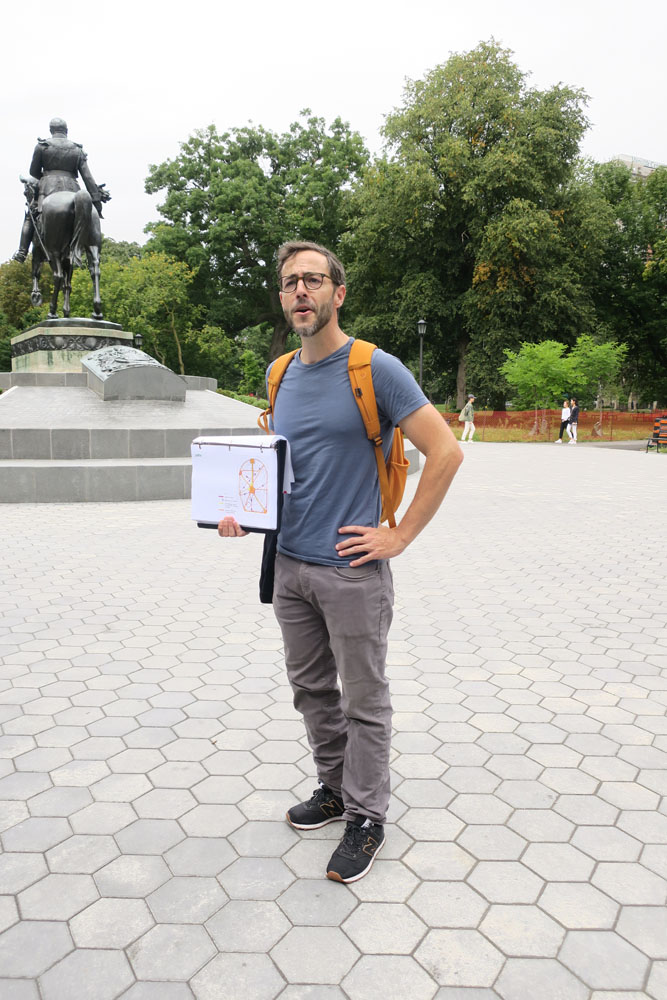Trees First: Queen’s Park revisited
“Trees First” is a great name for a nonprofit organization or advocacy group. It also makes for a snappy slogan. But in a recent project in Toronto, it went beyond slogan to guiding principle for landscape design. At the newly renovated Queen’s Park North, trees were put first in vision and practice, during and after the design work for this beloved greenspace in the heart of downtown Toronto.
“Every decision had to be measured against tree survivability,” says Michael Ormston-Holloway, a principal at The Planning Partnership, the firm that led the design and consultation process for the City of Toronto, creating a master plan and implementing it.
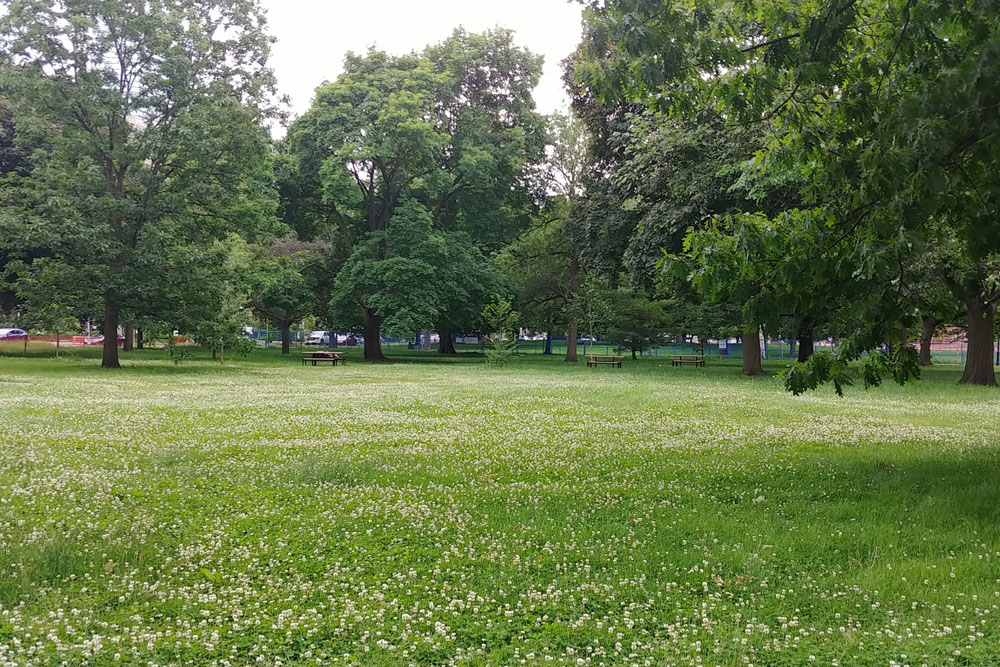
“Through consultation, we heard that what the community treasured about Queen’s Park North are the trees and the green oasis in the busy downtown,” says Nancy Chater, senior project coordinator for Toronto’s Parks, Forestry and Recreation Department. “So rejuvenating the urban forest and re-greening the lawns was a major focus.”
What this meant, in practice, was “not only not damaging trees,” explains Ormston-Holloway, “but breathing life into them.” His descriptions of some of the techniques used for this work sound almost surgical in their precision. For example, all excavation was done using air compressors hooked up to air spades with high-pressure tips, to dig down deep and lift soil without damaging trees’ feeder roots. “You can’t put a shovel anywhere in the park without hitting feeder roots,” notes Ormston-Holloway, and those feeder roots are directly related to tree health.
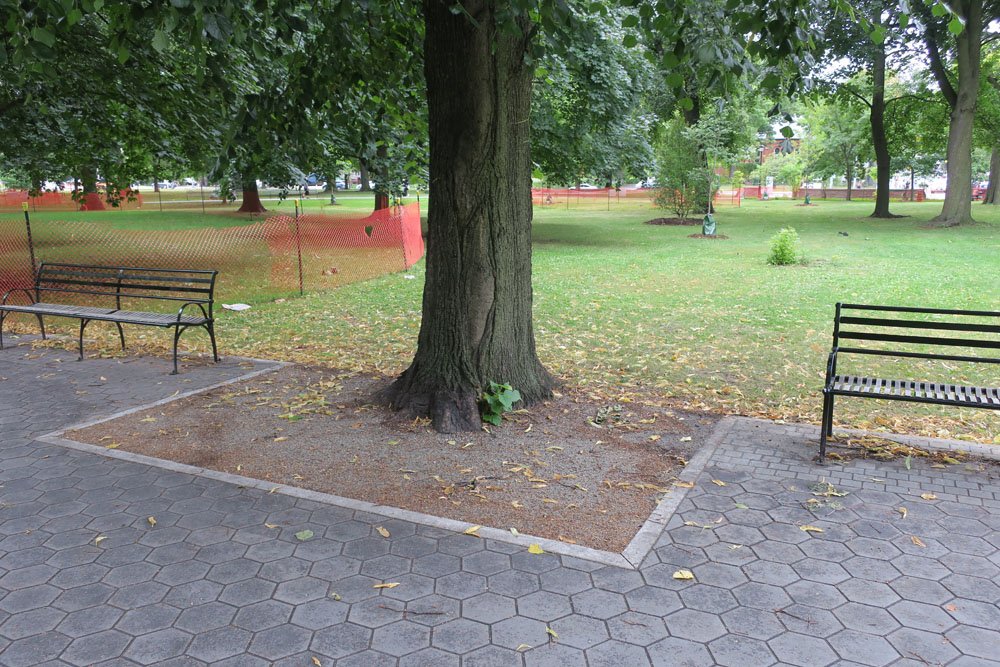
While it’s not unusual to use air compressors for exploratory investigations into root locations, Ormston-Holloway says “it’s not typically used as a construction tool,” as it was at Queen’s Park North. As well, machinery was “tracked” (wheels removed and tracks wrapped around them) in order to minimize soil compaction and maintain soil pore space. Radial trenches, 8 to 14 inches deep and a foot wide, were dug out in a star pattern around more than 250 semi-mature and established trees that had been suffering from compaction—in effect, vertical mulching to fluff up the soil and restore bulk density. The drilled cores were then filled with soil amendments such as micronutrients and micro-fungi. “We packed the holes with food,” Ormston-Holloway says with enthusiasm. “Once you’ve got healthy soil, you’ve got the beginnings of a living system,” he adds. “And the integrity of living systems drove this project.”
Just as the combined arboricultural practices created a unique construction process, there is likewise a highly unusual aspect to the post-construction life of Queen’s Park North. “Tree rejuvenation rest areas” are being piloted there, with large fenced-off sections protecting the soil from the compaction caused by foot traffic. According to Chater, “we have started with two of these rest areas, one in the southeast and one in the northwest,” and “the rest areas will rotate gradually through the park.” While fenced off for two years, these areas will not be mowed. “It will give the soil a chance to rebound a bit,” says Ormston-Holloway. Having restricted areas, even temporary ones, in a public park is a bold move, and the City has installed signs to explain the reasoning to the public.
Just how important Queen’s Park North is to people was demonstrated at the beginning of the project, when most of the arboricultural work was being done. “The public didn’t see a lot of machines and big activity so they thought nothing was being done and they called 311 to let us know!” says Chater.
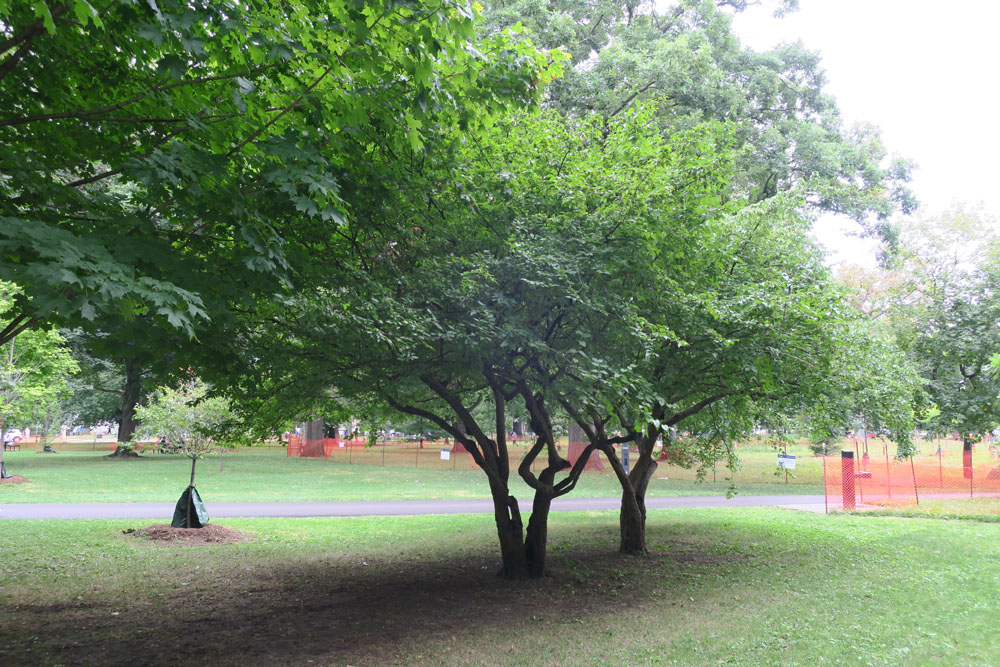
Where work on the park was anything but invisible was in the widespread planting of new trees. Prior to the rejuvenation of Queen’s Park North, there had been extensive evaluation of the health of the trees there, in 2004, as part of a Trees for Toronto Foundation project. This study found there were 290 trees representing 45 different species, but with just six species (Norway maple, red oak, European ash, eastern white cedar, little leaf linden, and Austrian pine) comprising 54 per cent of the total number. Of great concern in terms of biodiversity was the fact that 21 per cent of the park’s trees were non-native Norway maples, and that native species comprised just 28 per cent of the trees. There was also concern that many of the trees were older specimens and that there were not enough young trees in the park to maintain canopy cover as the older trees died. Thus, the renovation of Queen’s Park North included the planting of 160 new trees, with a focus on native species— “diversity for landscape resiliency,” as Ormston-Holloway puts it.
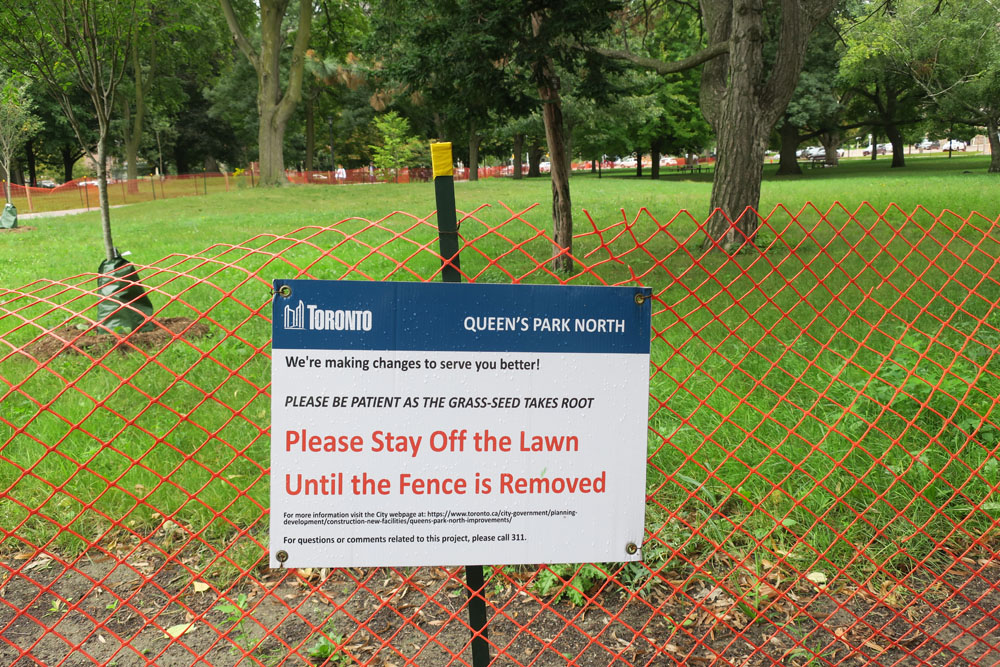
Ever since it opened with royal fanfare in 1860 as the first public, municipally operated park in British North America, Queen’s Park has accommodated at least two very different civic impulses: to be a place of ceremony, gathering, and protest, and to be a place of respite, leisure, and pathway. Some of the park’s trees—350-year-old red oaks, and white oaks approaching 400 years old—have been growing for longer than the city has existed. Deborah Metsger, assistant curator of botany at the Royal Ontario Museum, calls them “grandfather trees.” Ormston-Holloway calls them “remnants of the original forest.” These trees are legacy treasures, and now, with the rejuvenation of Queen’s Park North, a legacy for the future has been planted and, even more importantly, the health of the new forest prioritized. As Ormston-Holloway puts it, “this project is going to be successful if all of the trees survive and if the trees are in better shape as a result of this work.”
TEXT BY LORRAINE JOHNSON, WHO WRITES BOOKS ABOUT RESTORING NATIVE PLANT ECOSYSTEMS.
